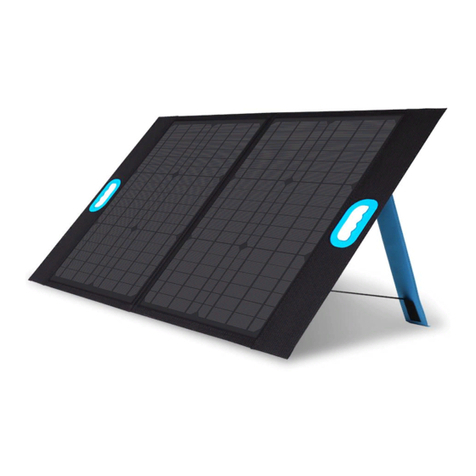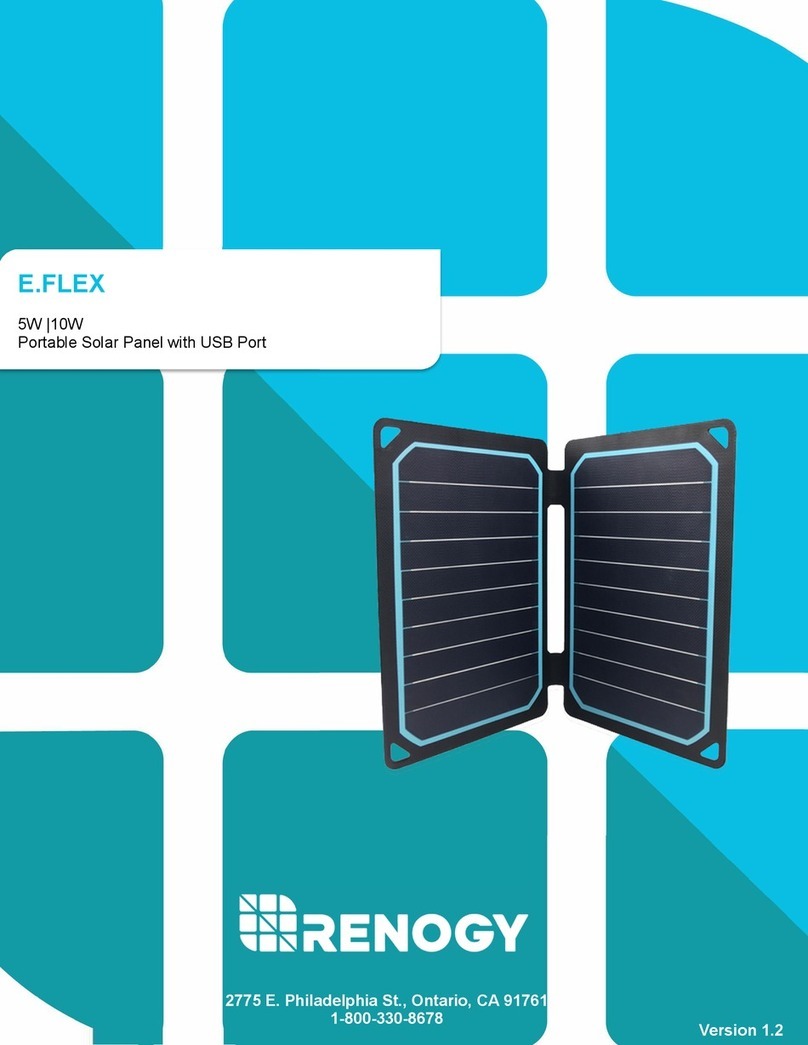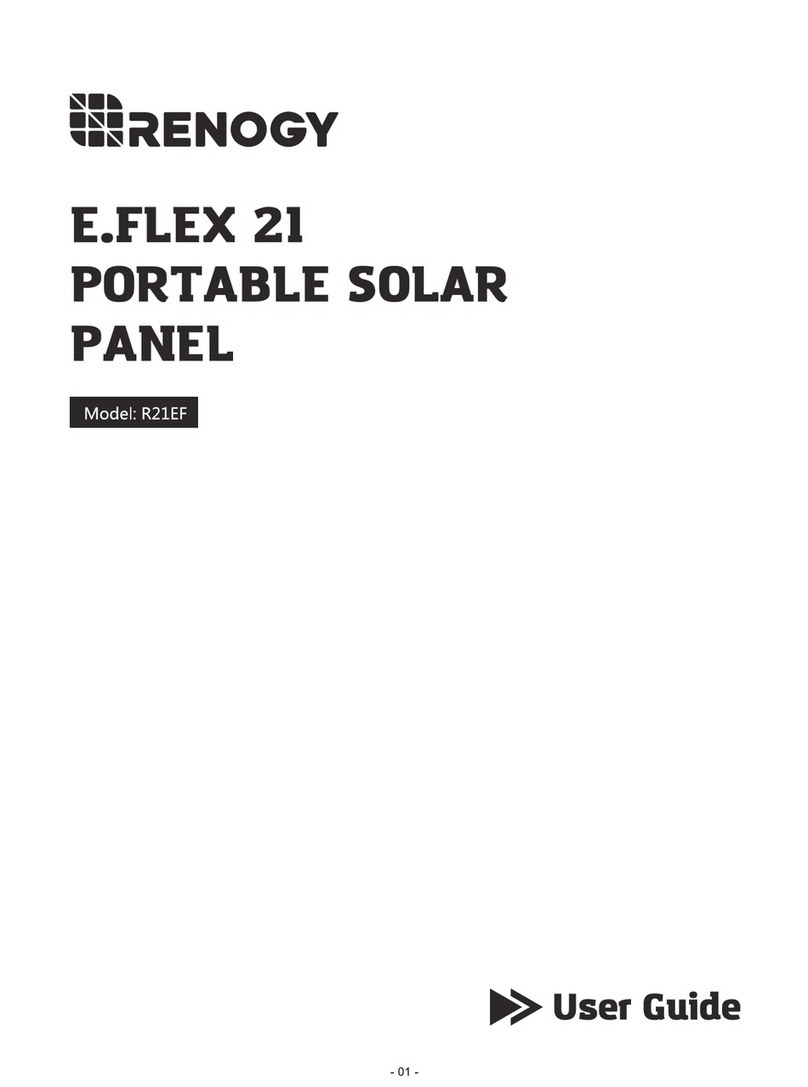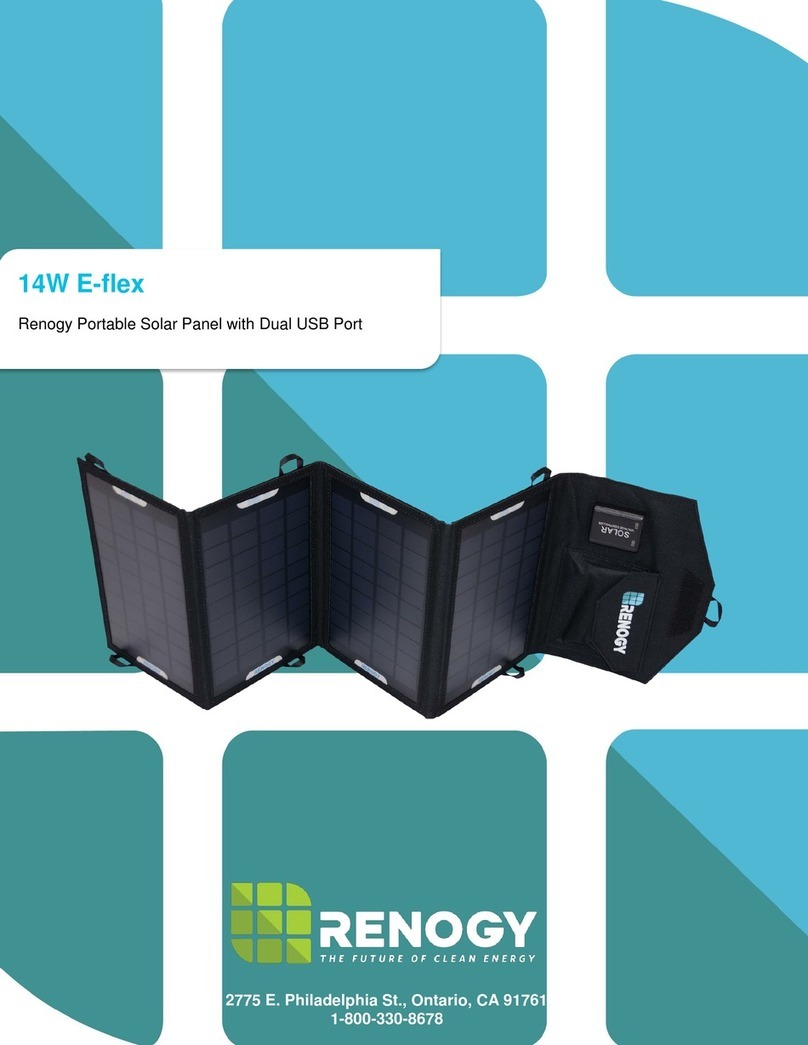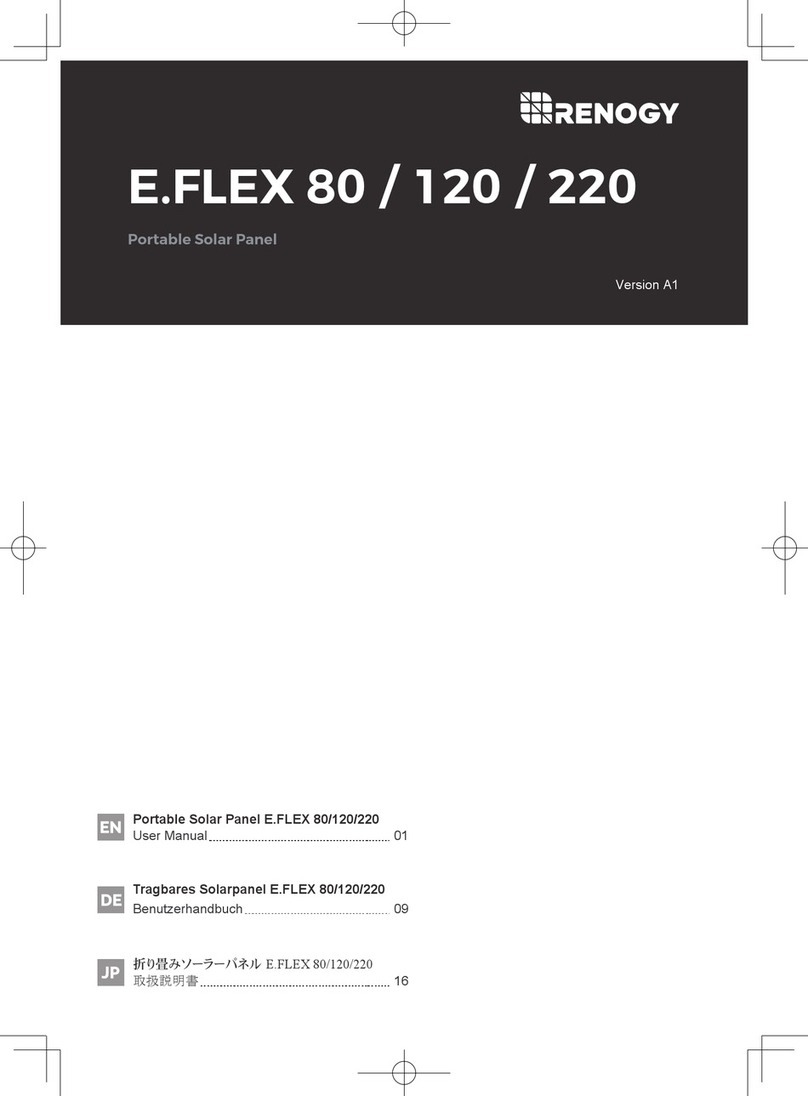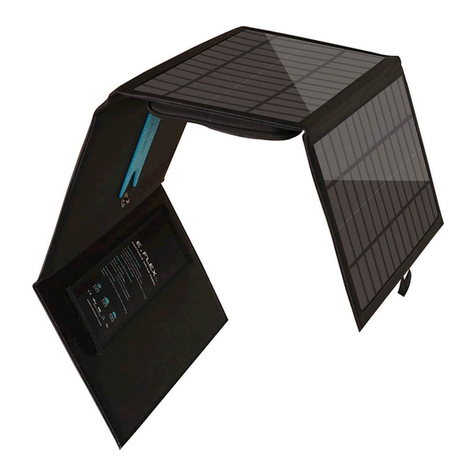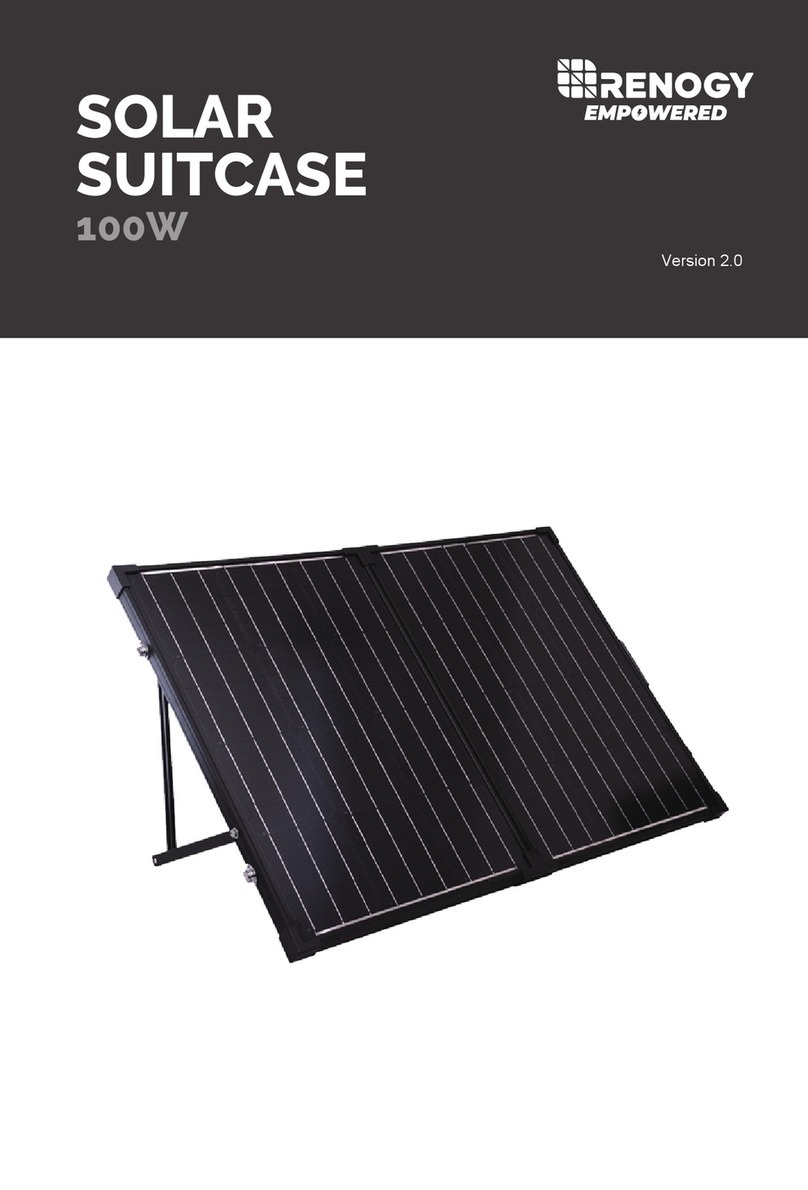
4
General Information
The Renogy Solar Suitcases combine highly efficient Renogy Solar Panels and a fully adjustable
10 Amp ViewStar Series Charge Controller with an LCD Screen to create an easy-to-use, ‘plug
and play’ system.
This system is specifically designed for mobile off-grid applications, where space and weight
limitations are abundant. The Solar Suitcase models support 12V deep cycle battery varieties
such as sealed, lead acid, gel, and flooded. With built-in tilting stands, these panels can be
adjusted at different angles to maximize the power output throughout the seasons.
The alligator clips included in this package make it easy to connect the panel to a battery in
seconds. If one ever needs to connect a battery with a different type of end terminal, the alligator
clips are attached via MC4 Connectors.
Key Features
Dot-matrix, backlit LCD for displaying operating information and data.
Unique dual-timer for the controller’s load terminal.
Full control of parameter settings that can be adjusted.
Sealed, Gel, and Flooded battery option.
4 Stage charging: Bulk, Boost. Float, and Equalization
Temperature compensation and correcting the charging and discharging parameters
automatically, improving battery lifetime.
RJ45 interface for use with the remote meter MT-50, which conveniently checks the
operating parameters of the charge controller
Protection against: overcharging, over-discharging, overload, short-circuit, and reverse
polarity.
Negative ground controller.
Tilting stand for maximum potential.
Convenient storage case for easy transportation.
PWM Technology
The PWM 30ACC-ViewStar utilizes Pulse Width Modulation (PWM) technology for battery
charging. Battery charging is a current based process so controlling the current will control the
battery voltage. For the most accurate return of capacity, and for the prevention of excessive
gassing pressure, the battery is required to be controlled byspecified voltage regulation set points
for Absorption, Float, and Equalization charging stages. The charge controller uses automatic
duty cycle conversion, creating pulses of current to charge the battery. The duty cycle is
proportional to the difference between the sensed battery voltage and the specified voltage
regulation set point. Once the battery reached the specified voltage range, pulse current charging
mode allows the battery to react and allows for an acceptable rate of charge for the battery level.
